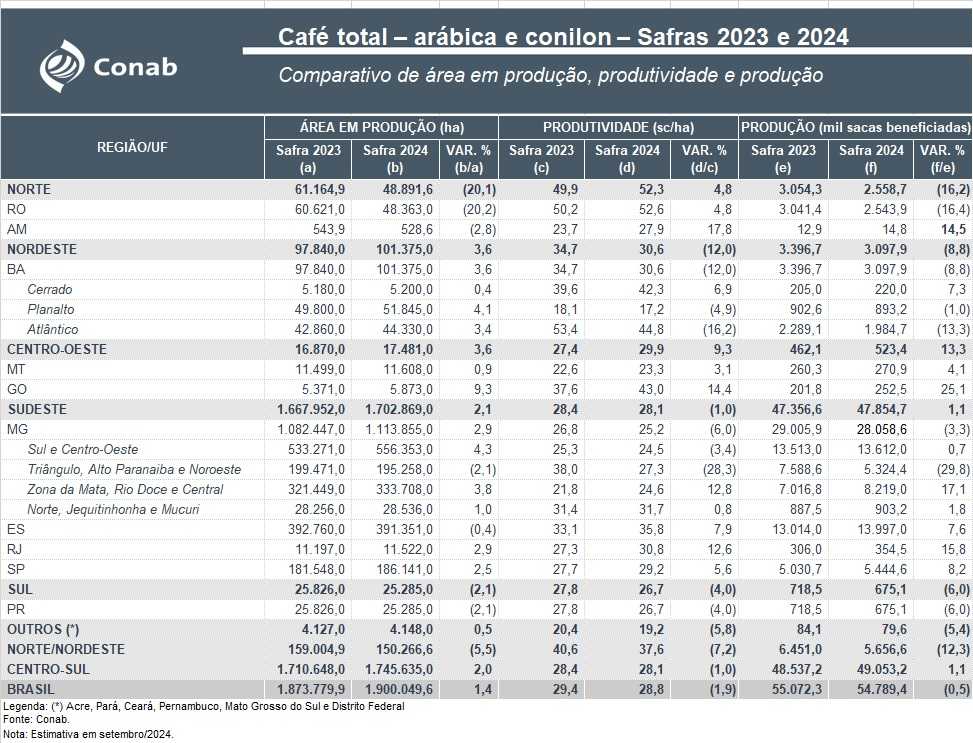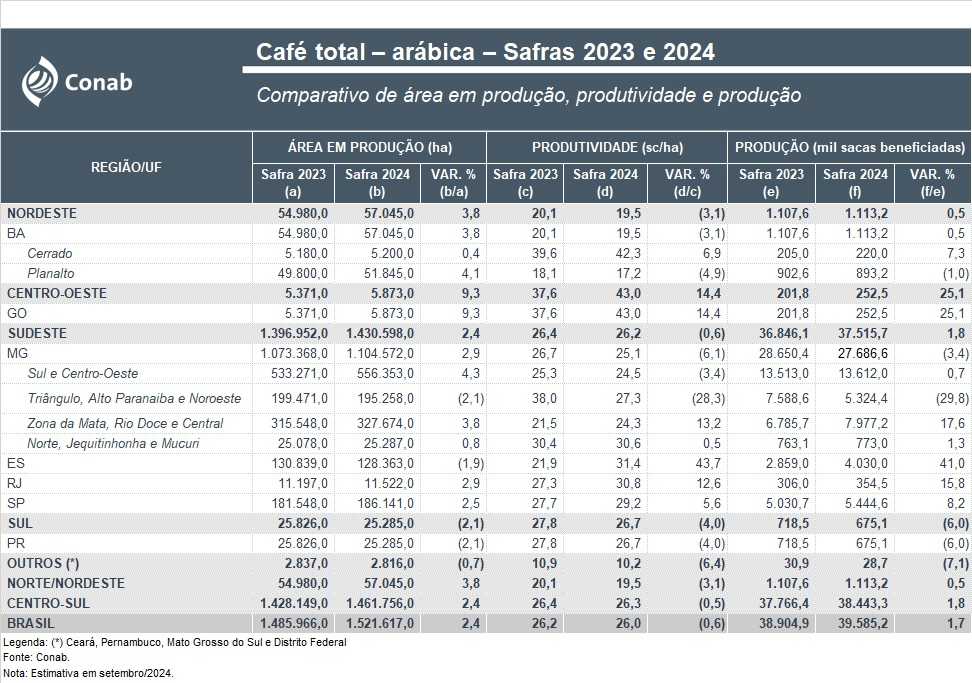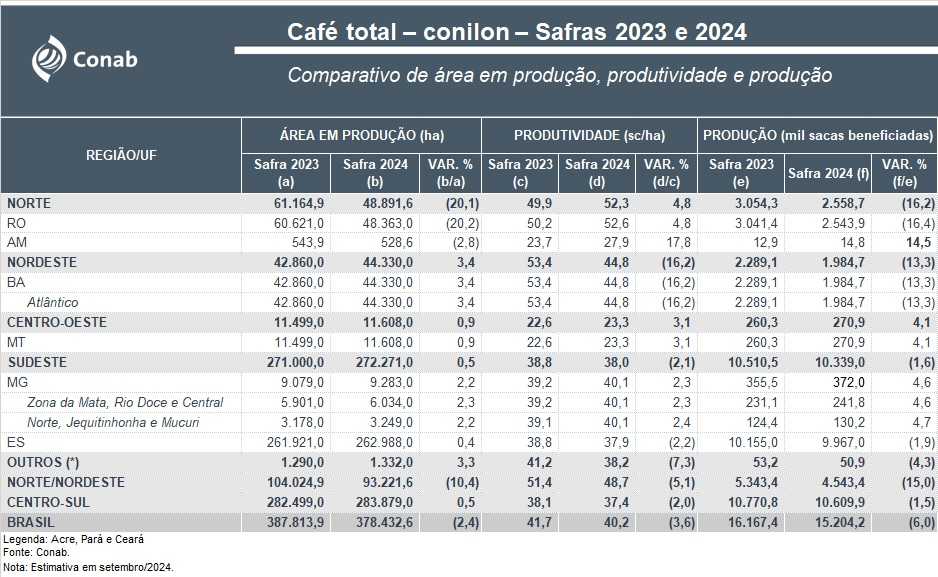MILAN – Conab has revised downwards the figures for Brazil’s 2024/25 coffee crop in its third official estimate, published yesterday afternoon (Thursday 19 September). The Brazilian government’s specialised agency now sees production at 54.79 million bags, some four million bags less than in its second estimate, released in May.
Production estimates for Arabica and Robusta were cut by 2.53 million and 1.5 million respectively. The new overall figure is 0.5 % lower than last year’s (2023/24), when 55.072 million bags were harvested.
At the beginning of the harvest season, everything pointed to a new increase in production ‘considering the vegetative state of the crops and the recurrence of a positive year in the two-year cycle’, Conab wrote in a note.
However, adverse weather conditions – with drought, scattered and poorly distributed rainfall – coupled with high temperatures during the crucial stages of fruit development, have reduced the outlook for productivity, which is now estimated at 28.8 bags/ha, down 1.9%.
Arabica production is pegged at 39.59 million, up 1.7%, but this bigger crop is the result of an increase in the productive area, which rose 1.52 million hectares (+2.4%), while productivity fell by 0.6%, to 26 bags/ha.
The tables below show Brazil’s total coffee production and the Arabica and Robusta crops (click on the tables to enlarge).


 What immediately stands out is the negative performance of Minas Gerais – Brazil’s main coffee producing state and the world’s largest Arabica growing area – where the crop fell by 3.3% to 28.1 million.
What immediately stands out is the negative performance of Minas Gerais – Brazil’s main coffee producing state and the world’s largest Arabica growing area – where the crop fell by 3.3% to 28.1 million.
Productivity drops by up to 6% to 25.2 bags/ha. In general, the beans had a higher number of defects and lower screen size. The drought and high temperatures were the main causes for this unexpected decline.
From April onwards, the rain virtually stopped, except for a few sporadic showers. This led to a sharp drop in Triângulo, Alto Paranaiba and Noroeste, where production fell from 7.59 million last year to 5.32 million this year (-29.8%).
This heavy fall in production was not offset by the positive trend recorded in the other mesoregions of the state, show Conab ‘s figures.
Crops grown at higher altitudes, where the climate was more favourable and the effects of high temperatures less pronounced, were less severely affected.
The weather also influenced the season in São Paulo, where production nevertheless recovered (+8.2%) to 5.44 million bags.
Estimates for Espírito Santo were sharply reduced, with production now estimated at just under 14 million bags, up 7.6%.
Robusta production fell by 1.9% to 9.97 million. On the other hand, the on-year for Arabicas was confirmed (albeit with a slight downward correction) with a harvest of 4.03 million, up 41%. Arabica productivity surged by 43.7% to 31.4 bags/ha, the highest in the country for the most prized variety.
Production in Bahia is estimated to have fallen by 8.8% to 3.1 million bags. The Arabica crop recorded a very slightly increase (+0.5%) to 1.11 million.
By contrast, the Robusta crop fell by 13.3% to just under 2 million bags, with productivity down by 16.2% to 44.8 bags/h
Finally, in Rondônia, productivity rose again (+4.8%) to a whopping 52.3 bags/ha, but due to a 20.1% reduction in the productive area, the crop fell by 16.2% to 2.56 million bags.


















